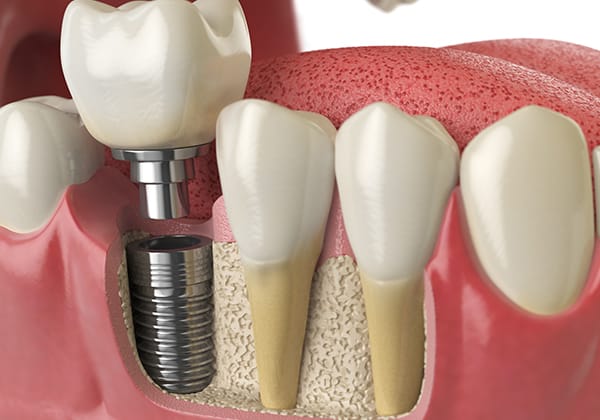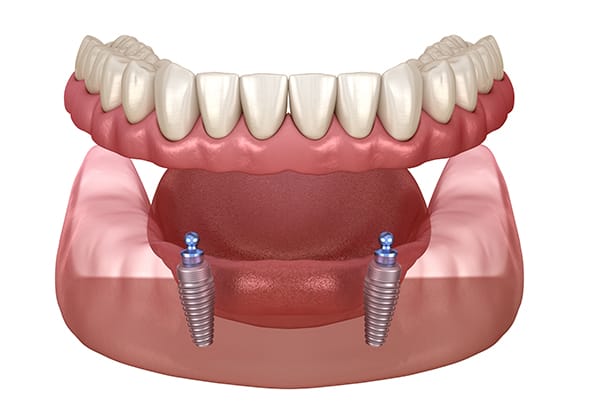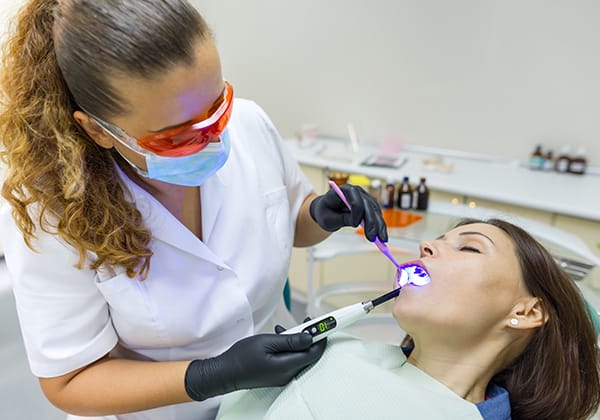Losing one or more teeth can cause your remaining teeth to shift, rotate, or become crooked, which can lead to an uneven bite and unwanted spaces that will make chewing more painful and dental home care more difficult. If you need to replace one or more teeth, dental implants can help restore your teeth to their natural form and function, making them easier to care for. Dental implants can also be used to help secure dentures into place, preventing them from making clicking noises or rubbing, or they can be used as an alternative to a crown-and-bridge treatment or partial dentures after teeth removal.
The Dental Implant Procedure
To determine if dental implants are right for you, our dental professionals will first examine your mouth, take x-rays, and discuss your dental history, home care, wants, and needs. If you are a good candidate for dental implants, we will place the implant below the gumline, giving the artificial roots enough time to stabilize and reinforce your jawbone to prevent further bone loss. Once the artificial roots have been given enough time to take hold, we will attach the replacement tooth crown to the implant above the gumline and provide you with care instructions for your new implant.







